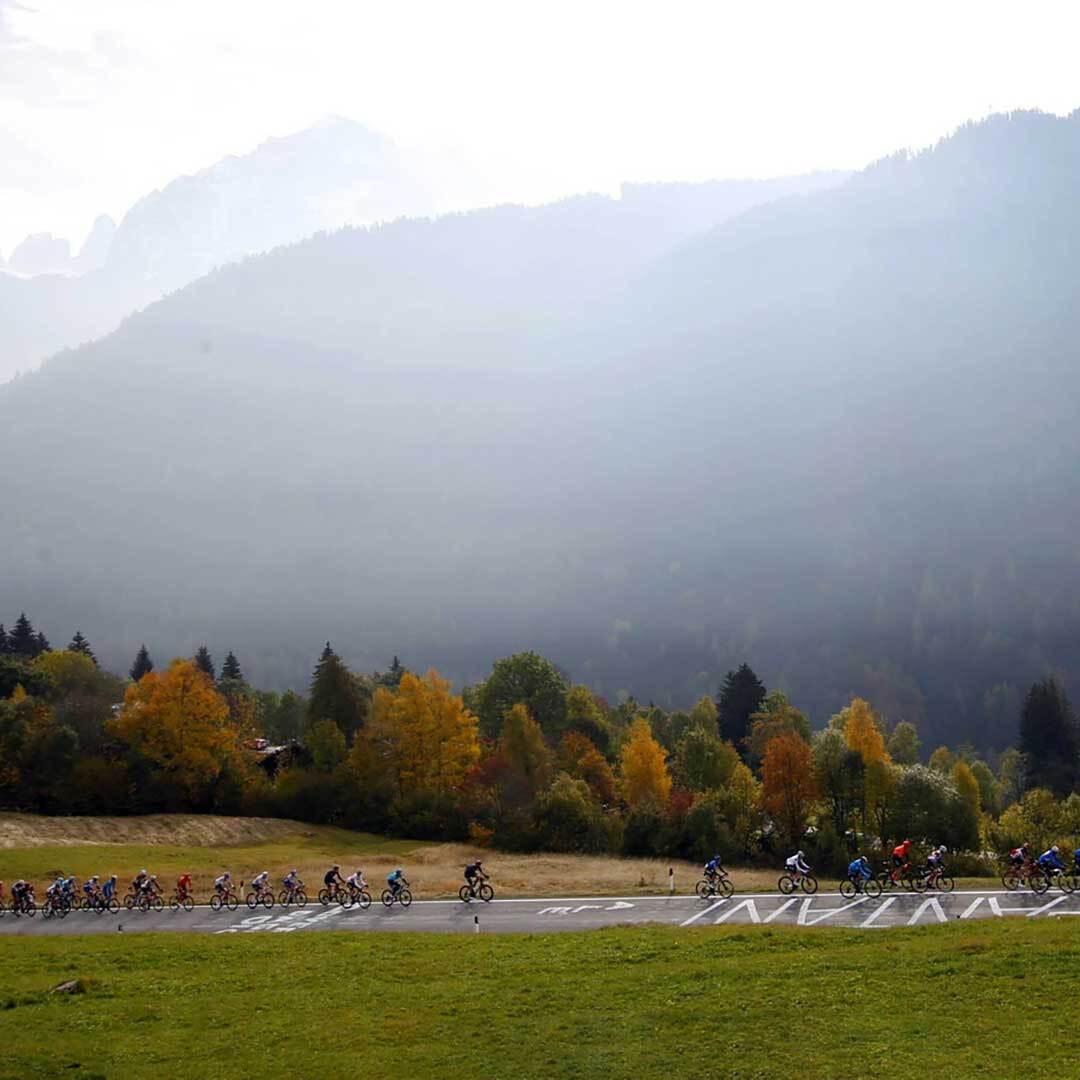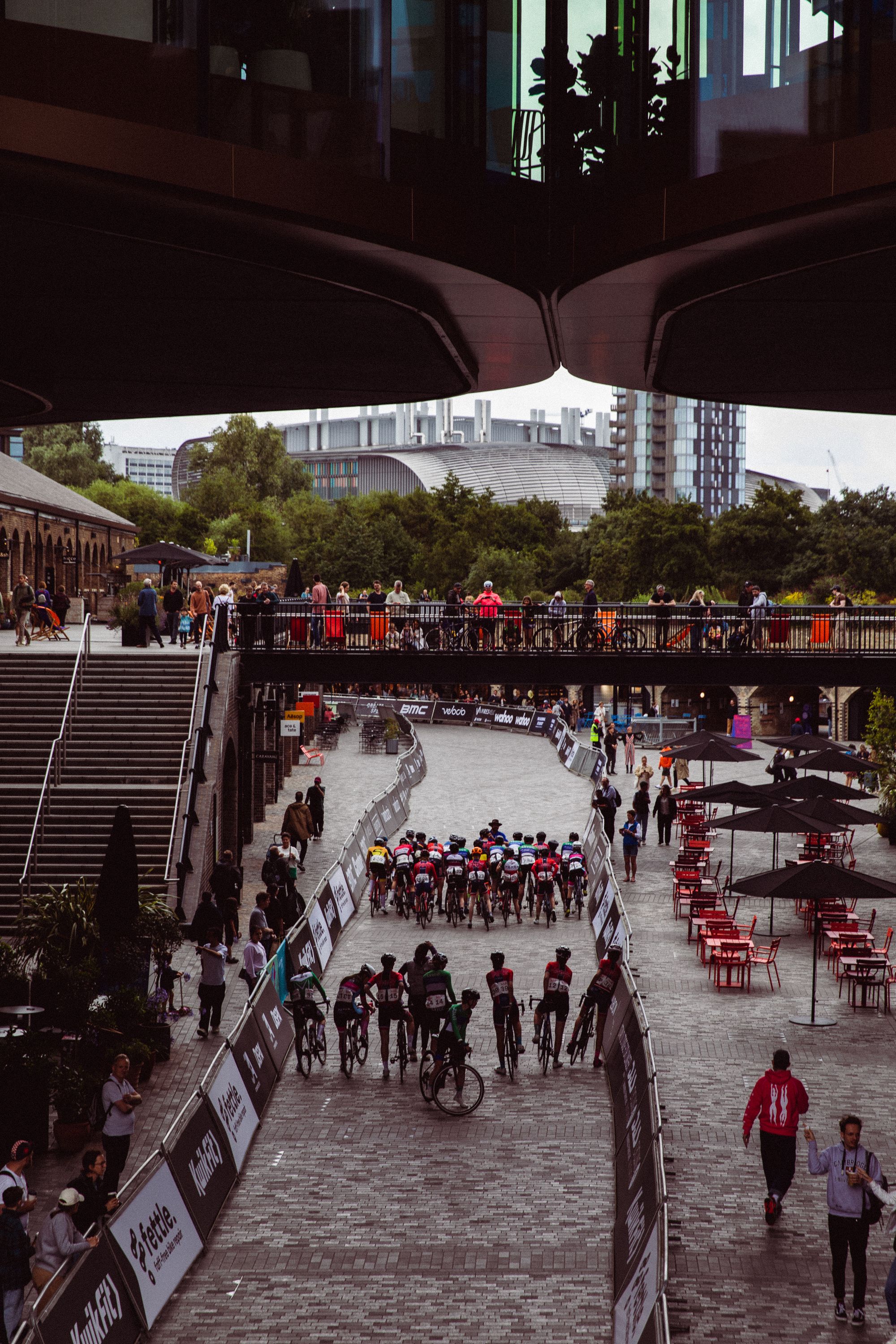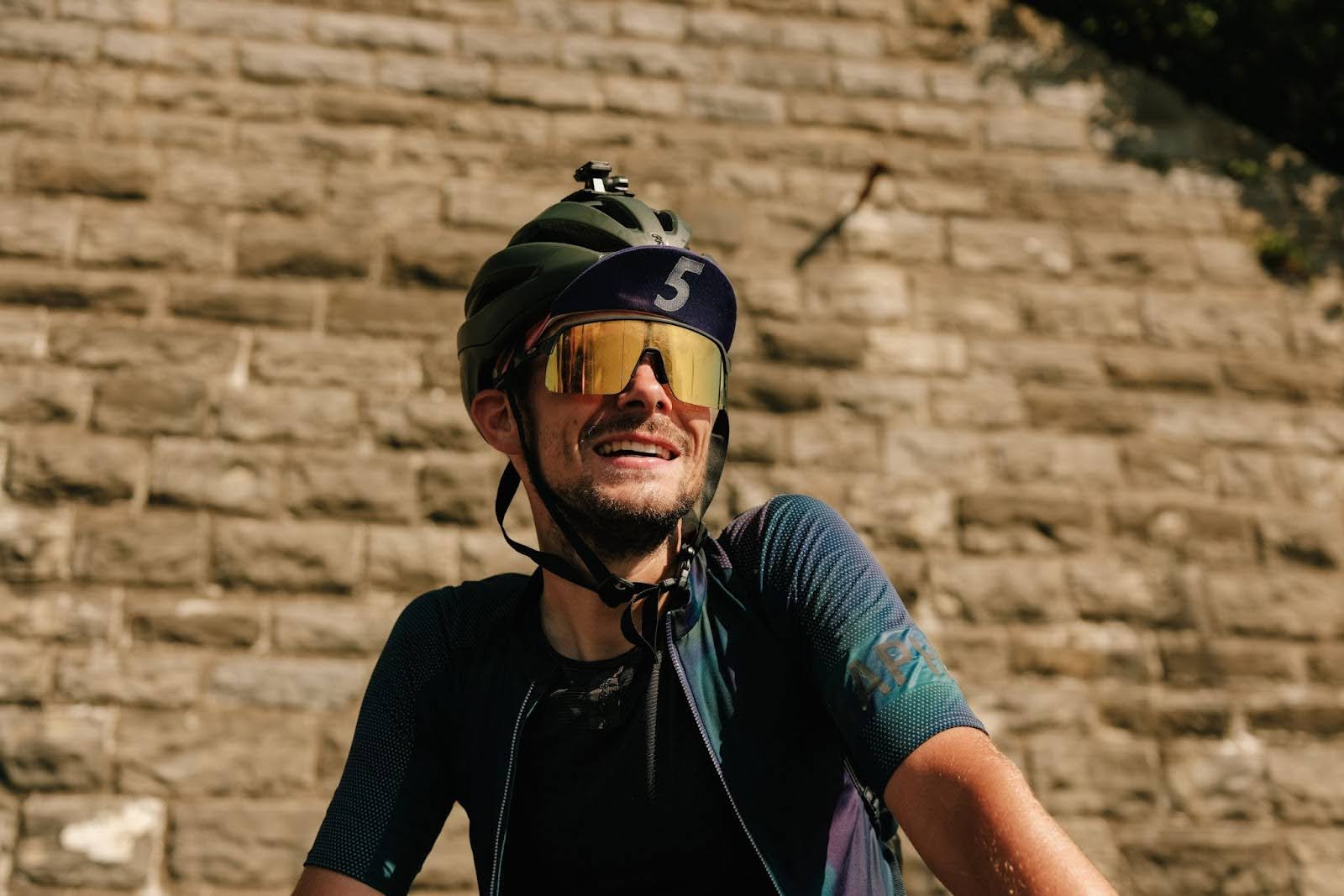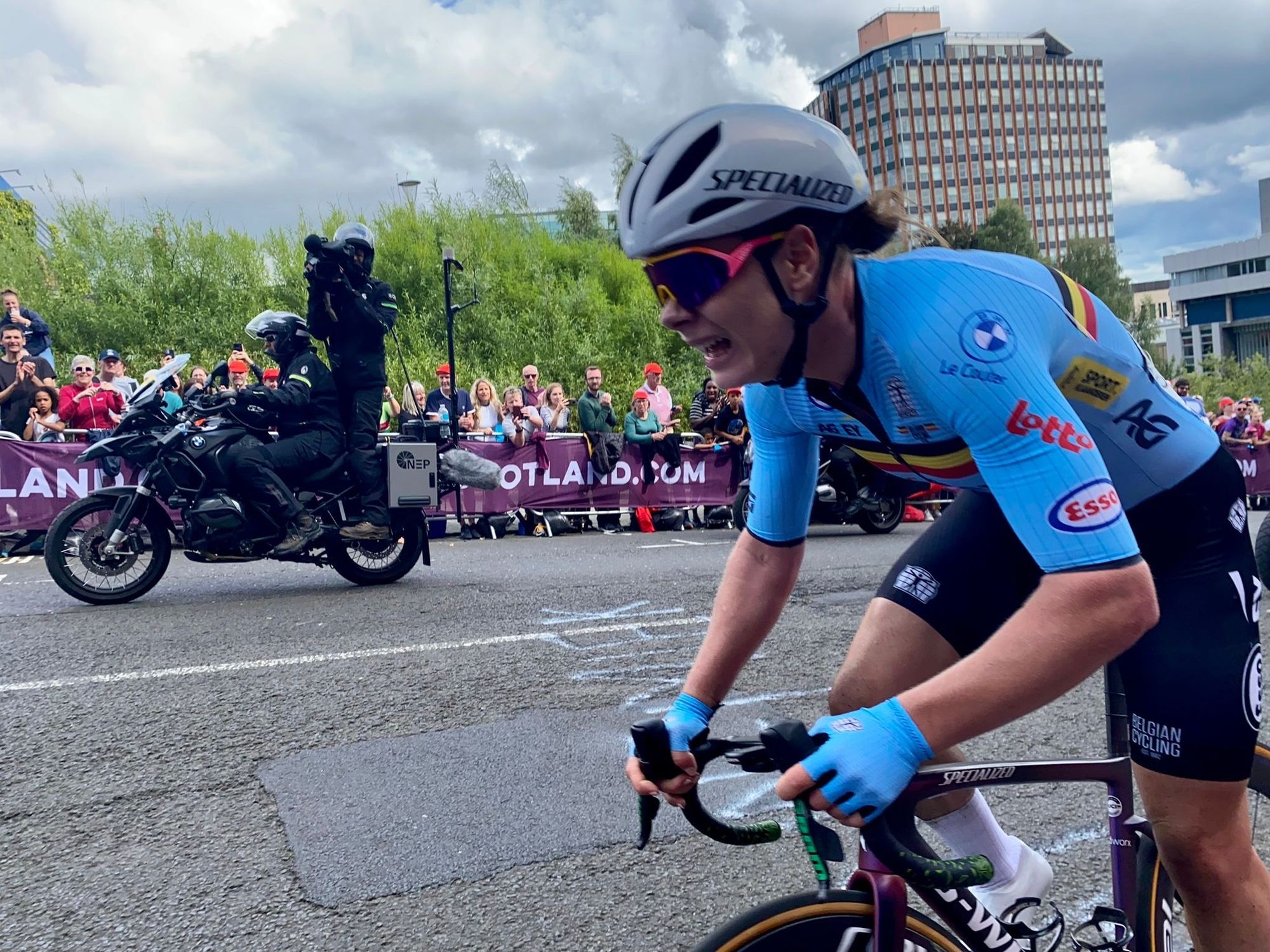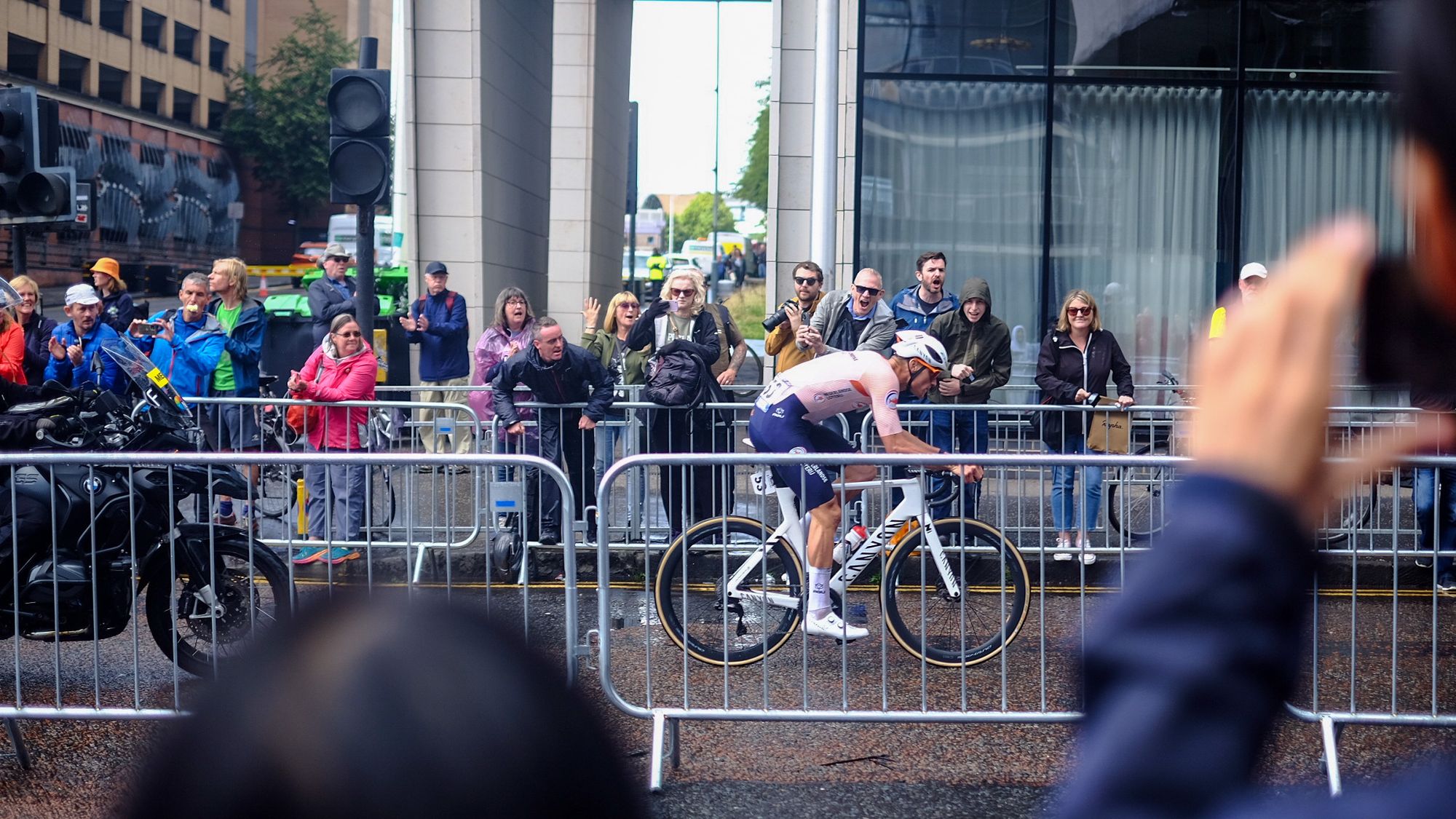WORDS: Rouleur
PHOTO: Dario Belingheri/LB/RB/Cor Vos
The Giro d'Italia is the first of the three Grand Tours in the 2021 cycling season and begins on the 8th of May this year. Known for its steep, demanding climbs, the 2021 route is set to provide an enthralling spectacle.
The 2020 Giro was peculiar for a number of reasons. Usually taking place in May, the race was postponed until October. This made it challenging for riders attempting to complete the Tour-Giro double as they'd be forced to ride them in quick succession. The Vuelta a España also overlapped with the Giro, making it impossible for a rider to complete 100% of both races.
Related – The 2021 Men's Early Season: The Rouleur Racing Guide
Related – The Women's 2021 Early Season: The Rouleur Racing Guide
As the world attempts to return to normality, so too will the cycling calendar begin to resemble the familiar pattern of the last years. This means that the Giro d'Italia has been restored to its common slot in May, two months prior to the Tour.
The race for the maglia rosa also made 2020 an atypical edition. Geraint Thomas, Simon Yates, Jakob Fuglsang and Vincenzo Nibali were the pre-race favourites, but Thomas crashed out early whilst Yates contracted COVID-19, meaning the 1-2 from Tirreno-Adriatico were out.
In Remco Evenepoel’s absence, João Almeida filled his shoes with flying colours. The Portuguese man quickly became a star. He held the maglia rosa between stages three and eighteen before battling on to finish fourth in his first Grand Tour. Tao Geoghegan Hart filled the void left by Geraint Thomas to go clear on the Passo dello Stelvio alongside the Team Sunweb duo of Wilco Kelderman and Jai Hindley — the three riders were separated by 15 seconds in the GC with three stages remaining.
Kelderman fell away, though, and Geoghegan Hart was distinctly stronger than Hindley in the final time-trial into Milan, catapulting the Brit to a sensational victory which could never have been foreseen.
ROUTE
The Giro d’Italia is renown for its multitude of steep climbs and hilly roads throughout, while also including some flat stages to tempt some of the world's strongest sprinters to join the fun.
The 2021 Giro kicks-off in Turin with a 9km flat time-trial — Filippo Ganna territory. Stages two and three could be for the sprinters, but stage three does have some short but sharp ramps, perhaps suiting the likes of Peter Sagan more than the pure sprinters who struggle more going uphill.
Stage four is the first of the mountain stages and features 3000 metres of climbing to Sestola. A pancake-flat stage five follows before another mountain stage on stage six. Here, we find the longest climb of the race thus far (15.5km @ 6%) before the stage finishes in Ascoli Piceno. A fourth opportunity for the sprinters lies on stage seven to round out the first week.
Week two gets underway with 3000+ metres of climbing — commonplace on this year’s route. The final climb isn’t the most strenuous in the race, though at 5.3km and 6.7%, those targeting pink must stay focused. Stage nine is no easier and has the potential to be a thrilling stage. Climbs are scattered throughout and coming in at under 160km, the stage could be ridden in an attacking fashion. This is particularly the case as stage 10 is the next opportunity for the sprinters, which will in-turn be followed by a rest-day.
To this point, numerous up-hill finishes would’ve taken place, but none of them come close to the queen stage. This means that we could see a tight general classification entering the first rest-day.
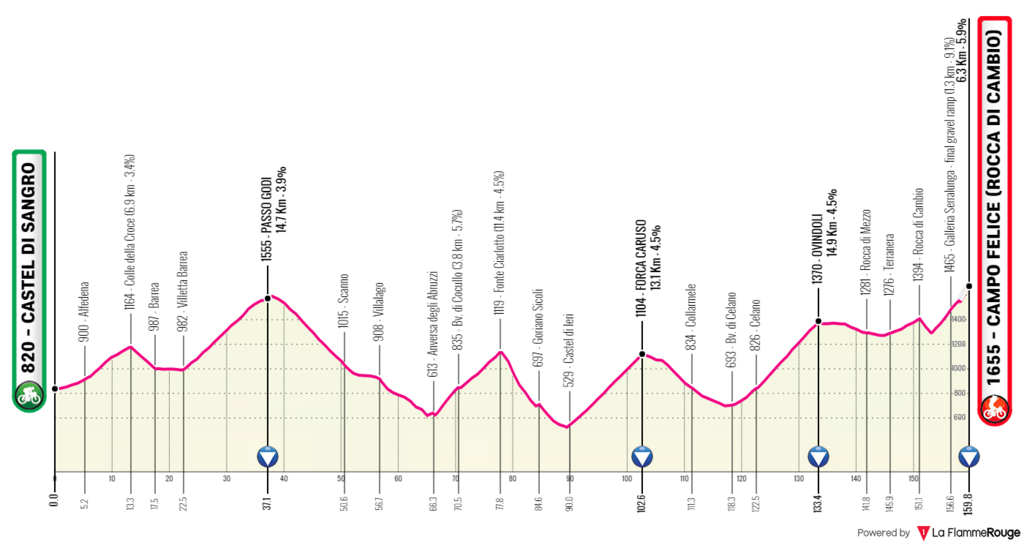
Stage 11 could be one of the most exciting at this year’s Giro d'Italia. Starting in Perugia, the peloton will head west into Tuscany before riding some of the gravelled roads that are raced at Strade Bianche. This is one of the must-see stages, anything could happen. Stage 12 begins in Siena and the mountains return. Over 4,000 metres will be climbed here as the stage difficulty ramps up. The Passo della Consuma (15.1km @ 6.1% ) and the Passo della Calla (16.1km @ 5.3%) are long, gruelling efforts which also feature steeper pitches. Again, the following stage could enable more attacks and general explosiveness as stage 13 is the very definition of flat.
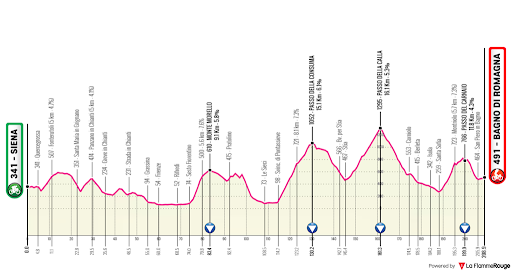
This won’t last, though. Stage 14 will tell us who is capable of winning the maglia rosa, as the revered Monte Zoncolan awaits. At 13.3km and 8.9%, the Zoncolan will be ruthless. It has been used on six occasions since 2000, most recently in 2018. Chris Froome won that day ahead of Simon Yates and the top 10 were spread across almost two minutes. Expect the group of favourites to shatter in a similar fashion this year.
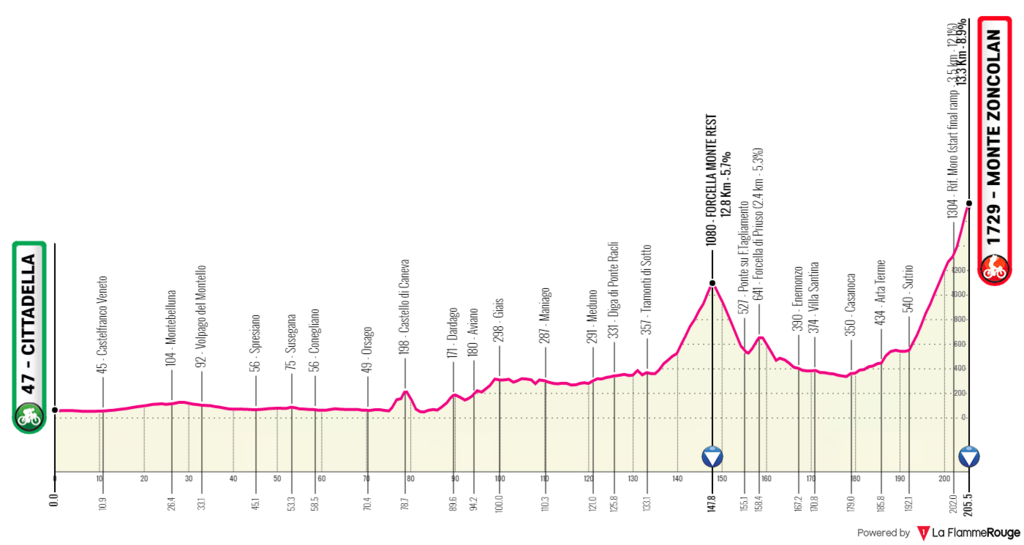
Stage 15 to Gorizia is much less complex. A breakaway win is feasible and if not, a day for any of the sprinters that survived Zoncolan is on the menu. Stage 16 is the final stage before the second rest-day and the riders will need it. 210km and well-over 5,000 metres of climbing awaits, featuring multiple iconic mountains including the Passo Fedaia (13.6km @ 7.6%), Passo Pordoi (11.9km @ 6.6%) and the Passo Giau (9.8km @ 9.3%). The peloton then run downhill to the finish in Cortina d’Ampezzo — the hosts of the Alpine Ski World Championships in February earlier this year.
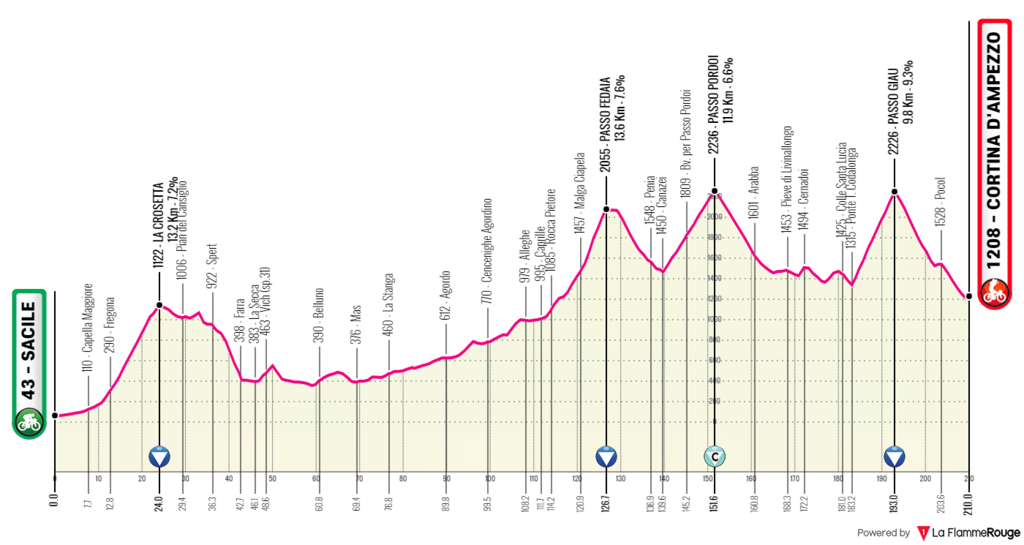
The queen stage may have been completed, but there are still opportunities aplenty for the GC contenders to take time on their rivals. The peloton must tackle the Passo San Valentino (15.1km @ 7.6%) on stage 17 before finishing on the Sega di Ala (11.6km @ 9.5%). Anyone not feeling well-rested will suffer. Next up, the longest stage of the 2021 Giro d’Italia. Stage 18 is flat for 200km before a series of short hills in the final 30km could shake things up.
Stage 19 is another test for the GC riders and features a summit finish on the Alpe di Mera (9.6km @ 9.1%). The most difficult test in the final week comes on stage 20, though. Although the stage doesn’t finish here, the Passo san Bernardino (23km @ 6.3%) will put any strugglers to the sword. The stage ends on the Alpe Motta, a climb of 7.4km @ 8.5%, just kilometres from the Swiss-Italian border.
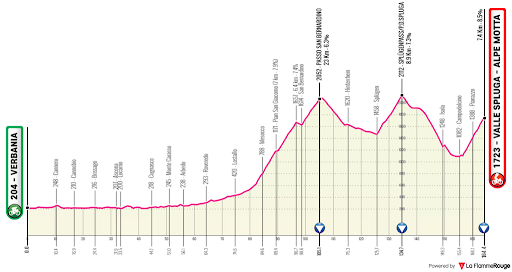
The torturous mountains may be done and dusted, but the GC riders must stay strong for one final day. A 29.5km individual time-trial to the centre of Milan could prove decisive in the chase for pink. After all, the pink jersey changed hands in the stage 21 time-trial last year.
CONTENDERS
The Giro d’Italia has a riveting startlist this season. The route features less time-trial kilometres than the Tour de France which means many of the strongest climbers in the world have turned their focus to Italy instead of the Tour. Perhaps the anticipated domination of Tadej Pogačar and Primož Roglič in France is also a factor.
Tao Geoghegan Hart, the reigning Giro champ, will not return this season. Instead, he looks to help INEOS at the Tour de France. The Grenadiers remain key protagonists, though. Egan Bernal will ride the Giro d'Italia for the first time in his career, and although he has stated that he is still struggling with back pain, his 2021 results suggest he is on strong form. The winner of the 2019 Tour is one of the premier favourites. Pavel Sivakov also joins the Grenadier squad and we expect to see further progression from the Russian this season. He is very talented and could take the reins should Bernal struggle. Filippo Ganna will look to win the two time-trials and help the team elsewhere.
Thibaut Pinot heads to Italy as one of the favourites. It’s been a difficult period in Pinot's career. After winning on the Tourmalet at the 2019 Tour, his subsequent withdrawal was a hammer-blow when he looked to be in the form of his life. He also struggled at the Tour last year after a crash on stage one. Something often seems to go wrong for Pinot, whether it be a crash, illness, or losing time in crosswinds. He changes things up this year to focus on the Giro, where he could do with some good luck.
Astana Premier-Tech have a great chance led by emerging Russian talent Alex Vlasov. He did well at the Vuelta last year after an impressive inaugural season at WorldTour level. Vlasov has proven to be one of the most exciting young climbers in the world, proven by his win on Mont Ventoux last Summer.
Deceuninck-Quick-Step are an interesting proposition. Remco Evenepoel crashed out heavily at Il Lombardia last year and hasn’t raced since. Should the Belgian prodigy make it to Turin for the start, he could be the out-and-out favourite. He started four stage-races in 2020, winning all four and defeating riders such as Jakob Fuglsang, Mikel Landa and Miguel Angel Lopez. His fitness is questionable though after a lengthy lay-off. We wait to see whether he is able to race and what type of form he is in.
Mikel Landa returns to the Giro this year after he finished fourth in 2019. The Spaniard is one of the strongest pure climbers in the world and cannot be underestimated, despite his inevitable time loss in the two time-trials. He is backed up by Pello Bilbao who finished in the top 5 at the Giro last season himself.
Emanuel Buchmann had a year to forget in 2020 after a crash at the Dauphine meant he was unable to perform at his best. The German had been improving every year and achieved fourth at the 2019 Tour de France overall. Buchmann has never ridden the Giro d'Italia before and his debut in Italy could see him challenge for pink.
Simon Yates returns to the Giro again this year after being forced to withdraw at his last attempt. The Brit is searching for his second Grand Tour win after winning the Vuelta in 2019. We know that both Yates bros are among the best in the world when the road goes uphill, meaning if Yates is on-form, he is a leading contender.
Another Brit looking to challenge overall is Hugh Carthy of EF Education-NIPPO. Carthy demonstrated elite climbing and time-trialling legs at the Vuelta in 2020, earning a place on the final podium. This was by far Carthy’s best result of his career yet, and at 26-years-old, we see no reason why Carthy cannot improve further as he gains experience racing directly against the finest cyclists around.
Trek-Segafredo are expected to arrive in Turin with Vincenzo Nibali and Bauke Mollema as their dual leaders. ‘El Squalo’ would’ve been disappointed with 7th overall at last year’s Giro d'Italia, can he bounce back at 36 years old? On the other hand, Bauke Mollema has started 2021 in exceptional form. First he won a stage at the Tour des Alpes, then the Trofeo Laigueglia. He could be going under the radar.
Outsiders for the GC include Romain Bardet, Clement Champoussin, Tobias Foss, Brandon McNulty and Marc Soler.
The sprinters are headlined by Caleb Ewan. The Australian set an ambitious goal of winning a stage at every Grand Tour in 2021. If he wins one early in the race, it’s unlikely we’ll see Ewan make it all the way to Milan with sprint opportunities few and far between in the final stages.
Peter Sagan will also be racing. He may not be the quickest man in the peloton, but the stages with enough meters uphill to drop the pure sprinters are perfect for the Slovak.
Fernando Gaviria, Giacomo Nizzolo and Elia Viviani are all very capable sprinters who will be the biggest threats to Caleb Ewan.
The newest sprinter on the block is David Dekker. The 23-year-old impressed early on in 2021 at the UAE Tour where he achieved two second-place finishes at his first WorldTour race. We are not certain just how good Dekker is yet, but he is definitely one to watch.
GET 30 DAYS FREE BIKE INSURANCE WITH ROULEUR
From long sunny cafe rides to squeezing in an hour after wok, cover your bike against theft, damage, loss and more. Try our 5-star rated bicycle insurance.
Hit the button bellow and your code will automatically be applied.

